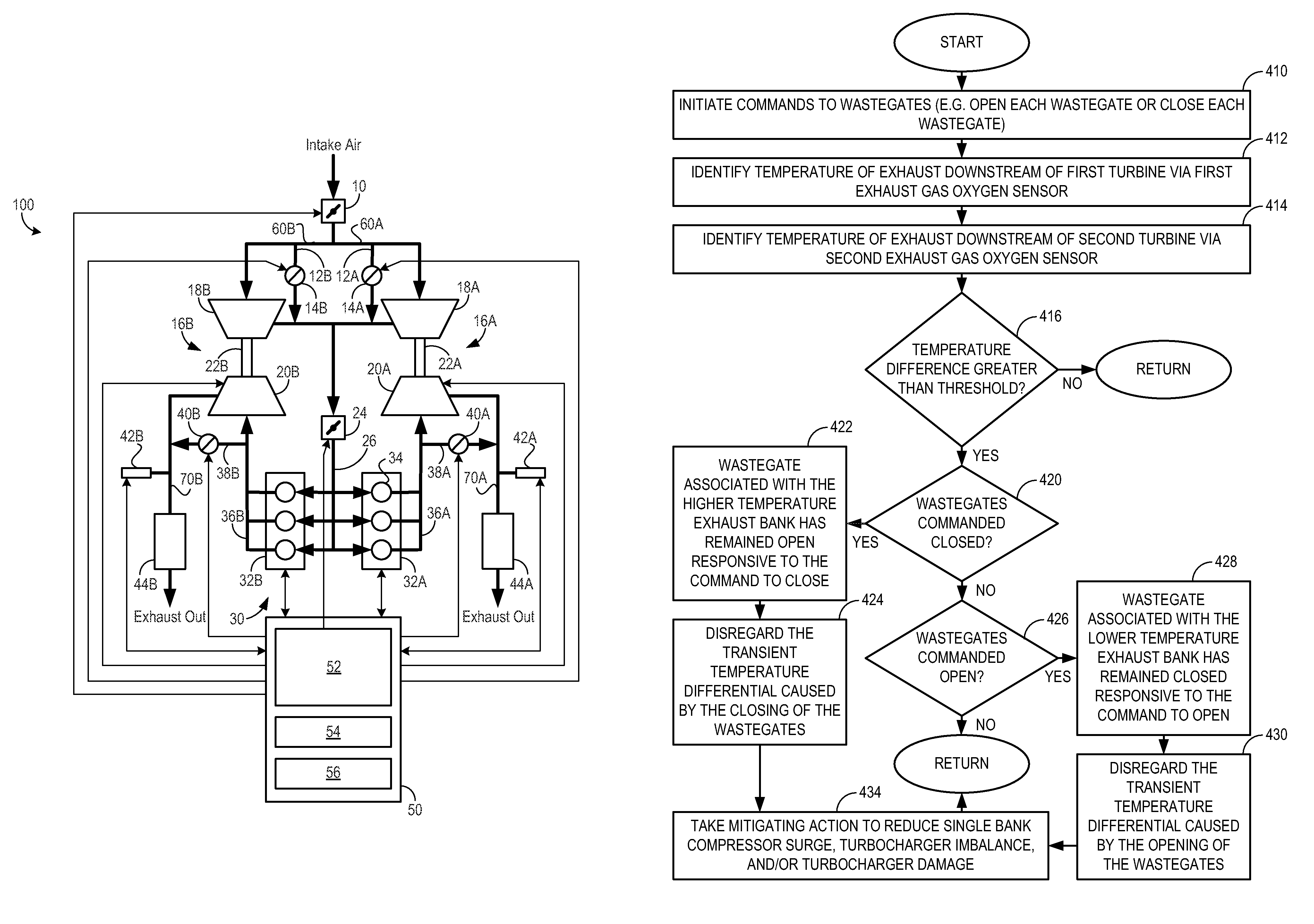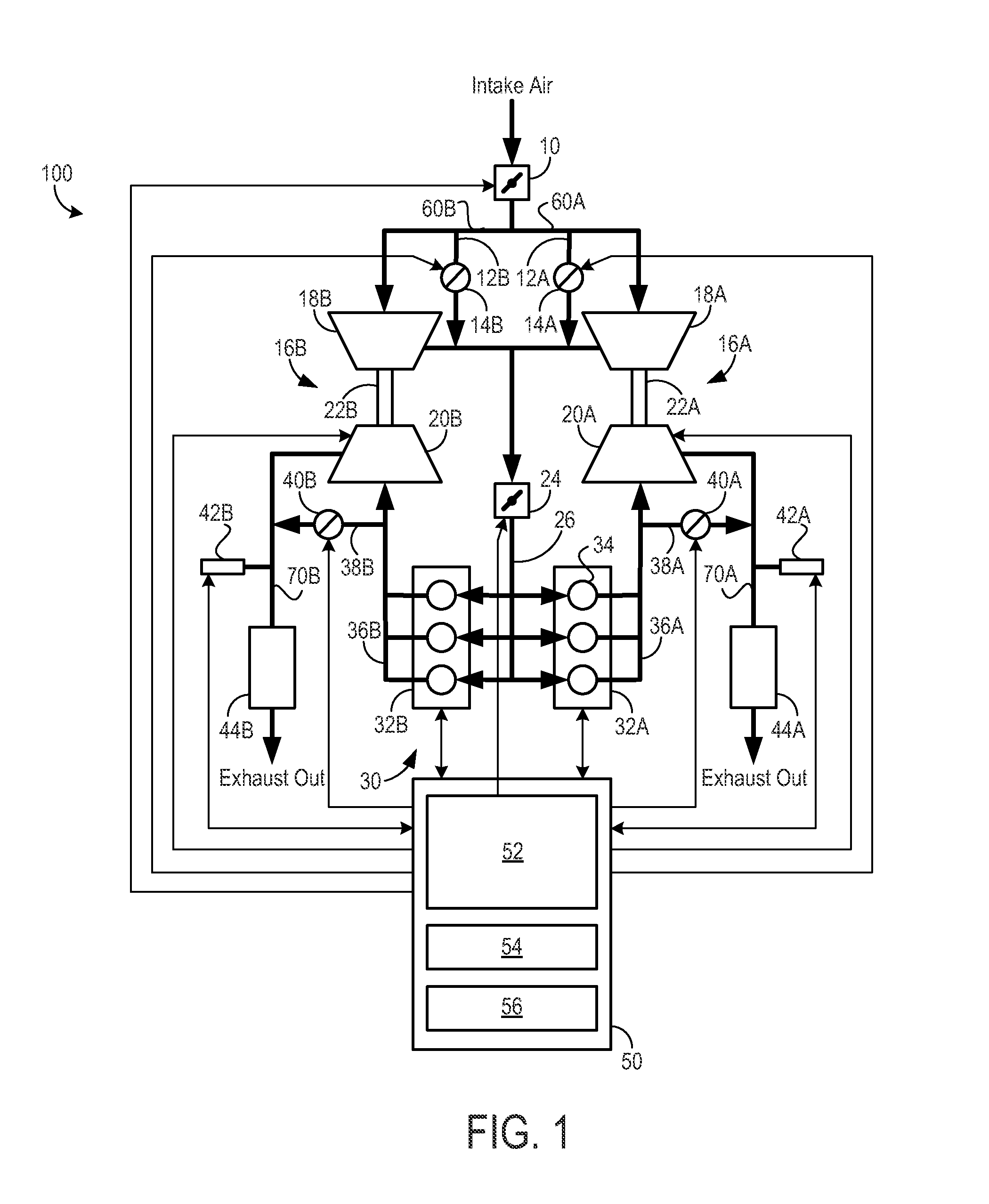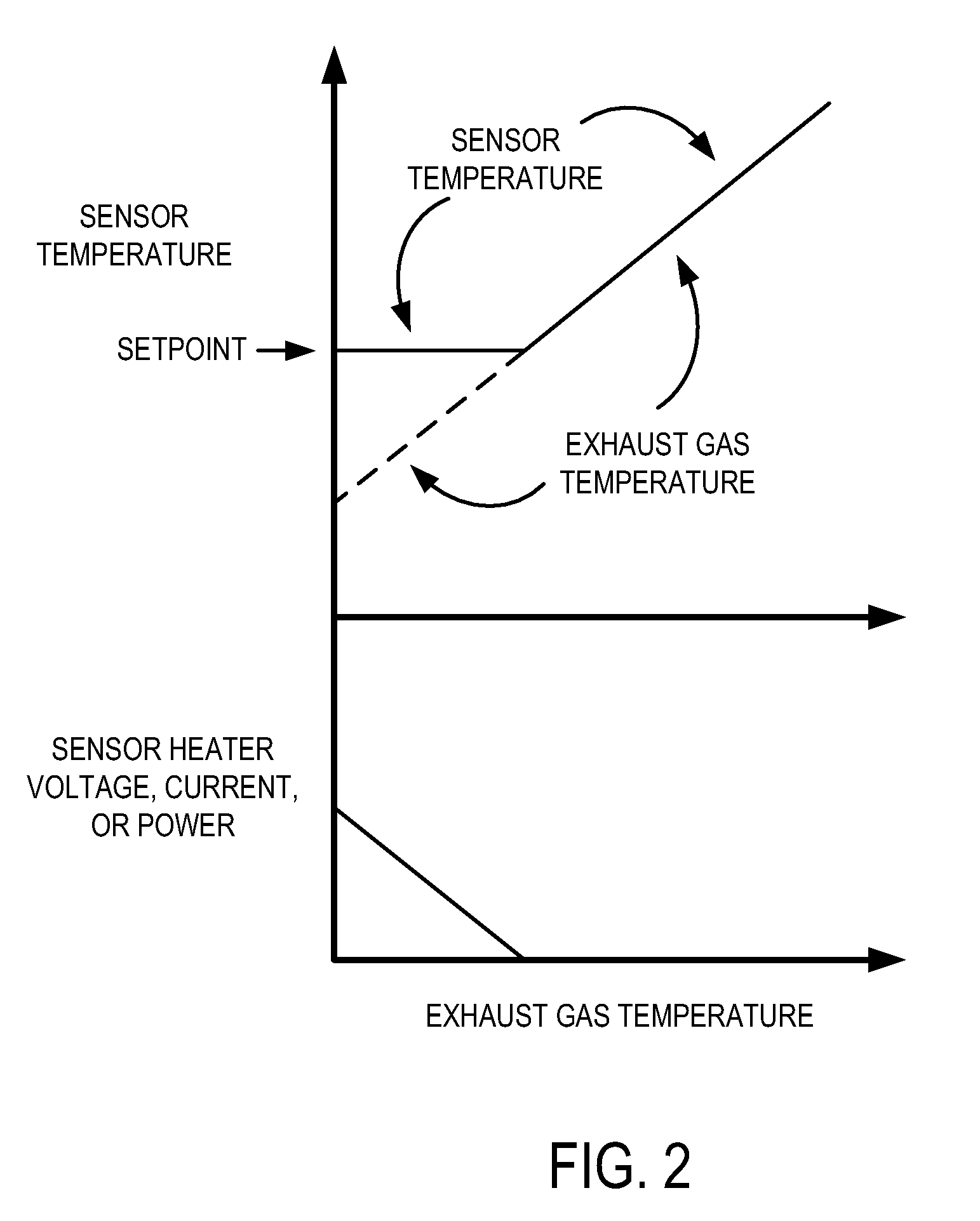Approach for identifying and responding to an unresponsive wastegate in a twin turbocharged engine
a technology of unresponsive wastegates and wastegates, which is applied in the direction of electrical control, process and machine control, instruments, etc., can solve the problems of wastegates becoming inoperable, unresponsive to subsequent commands, and causing turbocharger imbalance and/or compressor surge, so as to reduce the imbalance of turbochargers and/or compressor surge
- Summary
- Abstract
- Description
- Claims
- Application Information
AI Technical Summary
Benefits of technology
Problems solved by technology
Method used
Image
Examples
Embodiment Construction
[0016]FIG. 1 shows a schematic depiction of an example engine system 100 including twin turbochargers 16A and 16B. In this example, internal combustion engine 30 includes a first cylinder bank 32A and a second cylinder bank 32B. Each of cylinder banks 32A and 32B can include a plurality of engine cylinders or combustion chambers 34. As one example, engine 30 may be configured in what may be referred to as a vee configuration whereby 3 or 4 cylinders are provided for each of cylinder banks 32A and 32B. It should be appreciated that engine 30 may include any suitable number of cylinders or cylinder configuration.
[0017]Engine 30 can receive intake air via an air intake system including a first air intake branch 60A and a second intake branch 60B. The first air intake branch 60A provides intake air to a compression device or compressor 18A of a first turbocharger 16A. Turbocharger 16A further includes an exhaust gas turbine 20A coupled to compressor 18A via shaft 22A. As one example, tu...
PUM
 Login to View More
Login to View More Abstract
Description
Claims
Application Information
 Login to View More
Login to View More - R&D
- Intellectual Property
- Life Sciences
- Materials
- Tech Scout
- Unparalleled Data Quality
- Higher Quality Content
- 60% Fewer Hallucinations
Browse by: Latest US Patents, China's latest patents, Technical Efficacy Thesaurus, Application Domain, Technology Topic, Popular Technical Reports.
© 2025 PatSnap. All rights reserved.Legal|Privacy policy|Modern Slavery Act Transparency Statement|Sitemap|About US| Contact US: help@patsnap.com



